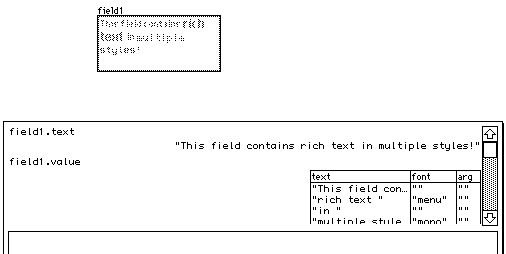Just to make sure you're clear on the distinction, a field's .value attribute is a table, and a field's .text attribute is a string:

An rtext table can contain hyperlinks, inline images, and multiple fonts, but a plain string cannot. In many situations that ask for an rtext table you can supply a string and it will be "widened" into rtext, but it will all be in the default font. If you copy the .value of one rich text field to another it will preserve its formatting, but if you copy the .text you will flatten it out into a plain text representation.
(For anyone with web development experience, field.value versus field.text is loosely similar to element.innerHTML versus element.innerText.)
Decker 1.34 introduced a new "rtext.replace[]" utility function that might be handy. If you're working with a lot of text, links, and cards, it might be useful to write a deck-level utility function that finds certain keywords in a string or rtext table and replaces them with appropriate links, which you could then call whenever you populate a field. For example, perhaps something like this:
on contextualize text do db:insert keyword replacement with "Alien" rtext.make["Alien" "" "About Aliens" ] "Weapon" rtext.make["Weapon" "" "Weaponry" ] "Snacks" rtext.make["Snacks" "" "Delicious Treats" ] "Zombo" rtext.make["Zombo" "" "https://zombo.com"] end rtext.replace[text db.keyword db.replacement] end
There's basically no limit to the possible complexity here (for example, you could automatically populate the keyword list by inspecting the titles of cards in the current deck), so it's up to you to choose what makes sense to you and is reasonably convenient for your purposes.

